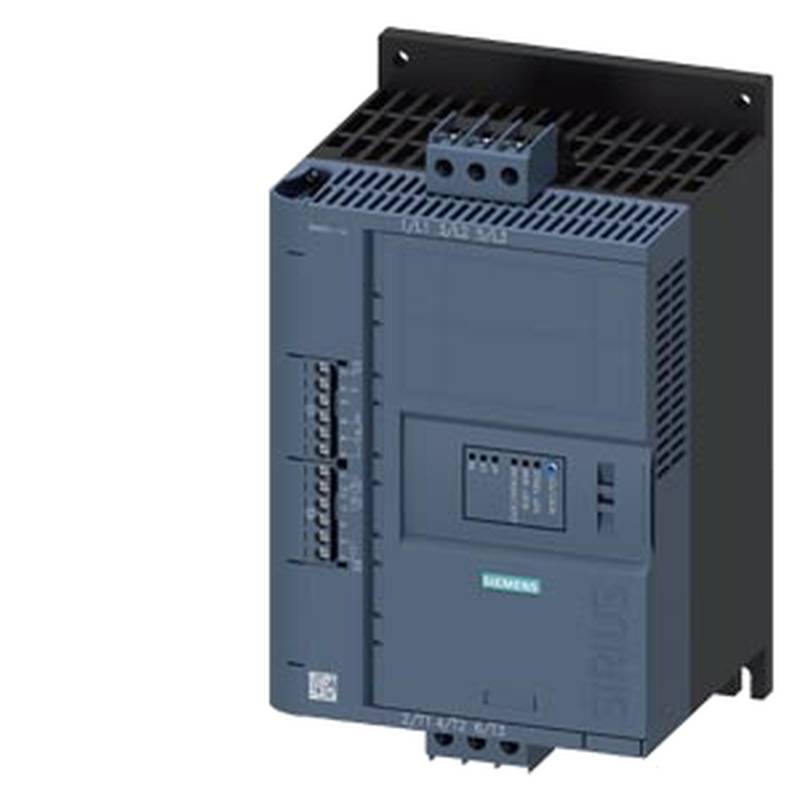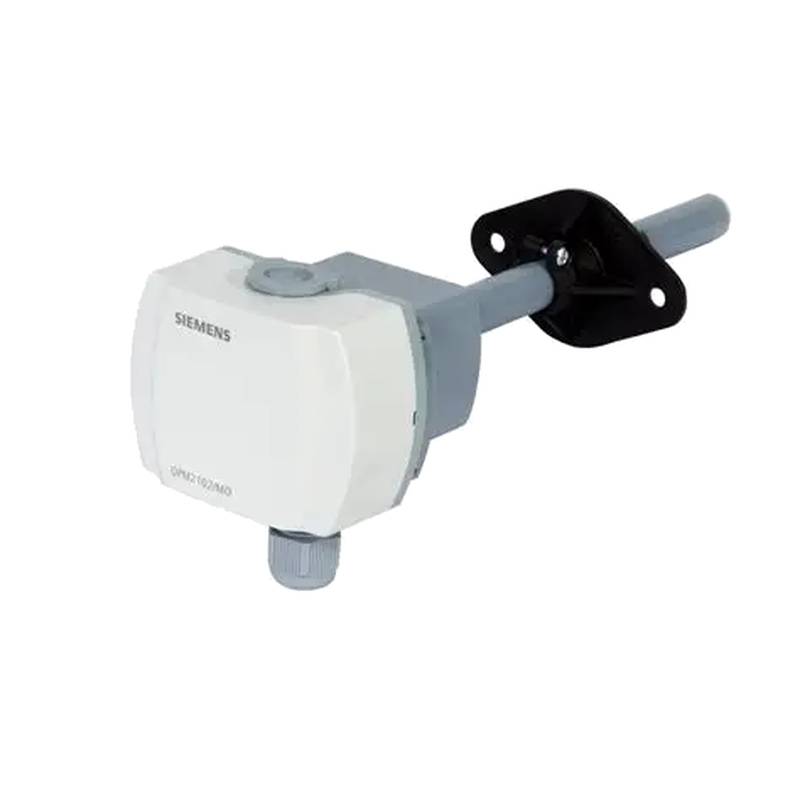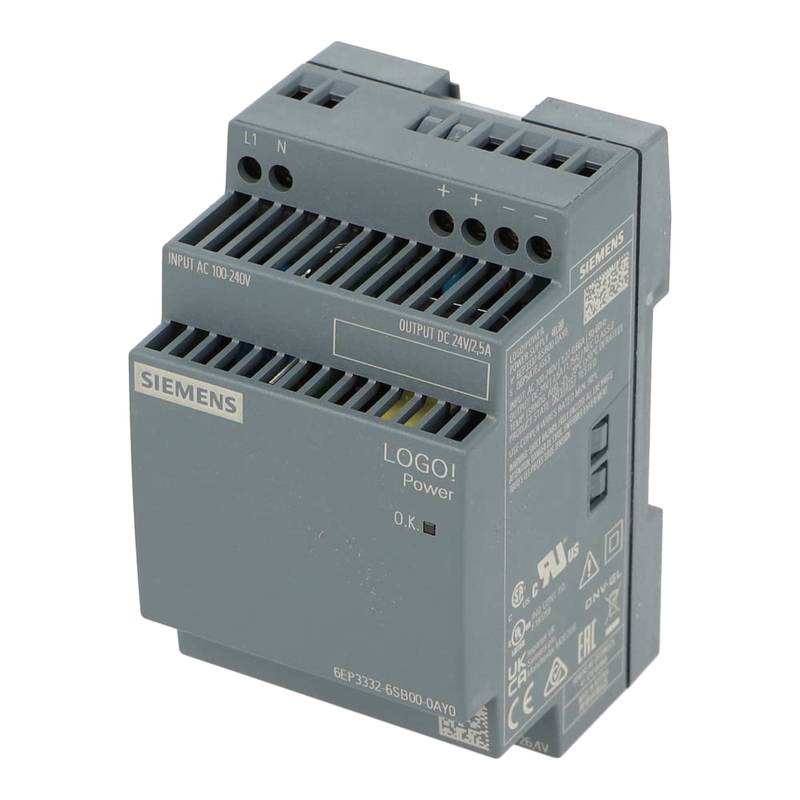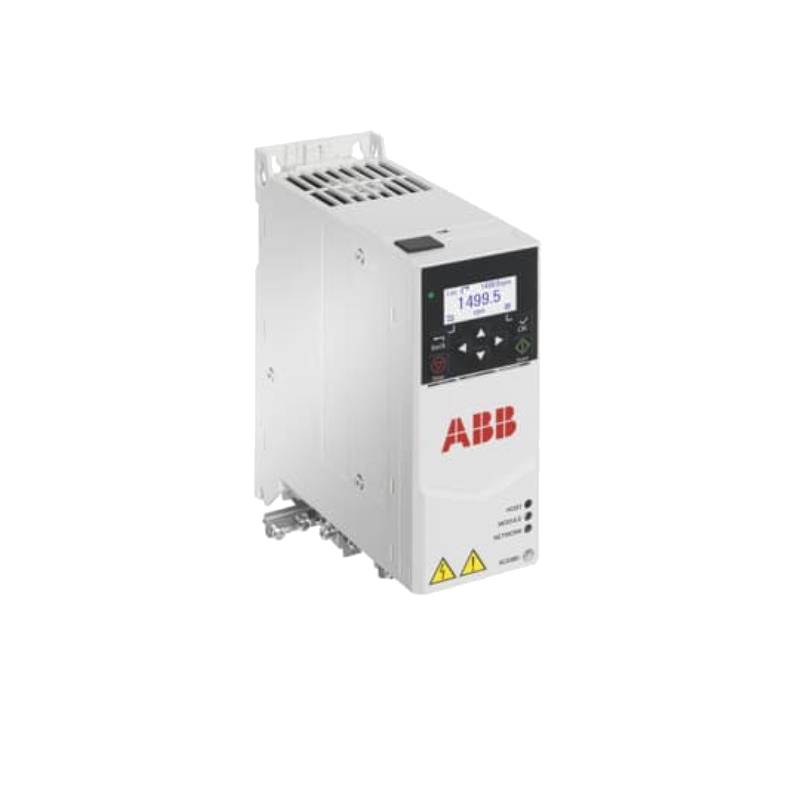
The Siemens 3RW5225-1TC14 Standard Soft Starter is a high-performance solution designed for smooth and controlled starting of three-phase asynchronous motors up to 30 kW. This robust device offers significant advantages, including reduced mechanical stress on machinery, minimized inrush current to protect electrical infrastructure, and enhanced operational efficiency. Its core features encompass integrated bypass, comprehensive motor protection, and intuitive parameter setting, making it a reliable choice for demanding industrial applications. Key technical parameters include a rated operating current of 63A, a voltage range of 200-480V AC, and a control voltage of 24V AC/DC.
Siemens 3RW5225-1TC14: Product Specifications
| Parameter | Value |
| :------------------------ | :-------------------------------------- |
| Product Type | Standard Soft Starter |
| Manufacturer | Siemens |
| Model Number | 3RW5225-1TC14 |
| Rated Operational Current | 63 A |
| Rated Power (at 400V) | 30 kW |
| Input Voltage Range | 200-480 V AC |
| Control Voltage | 24 V AC/DC |
| Starting Method | Soft Start |
| Integrated Bypass | Yes |
| Motor Protection | Yes (Overload, Phase Loss, etc.) |
| Communication Interface | Optional (e.g., Modbus, Profibus) |
| Mounting Type | DIN Rail |
| Dimensions (H x W x D) | 189 mm x 135 mm x 170 mm (approx.) |
Core Features & Market Positioning
The Siemens 3RW5225-1TC14 distinguishes itself in the market through its robust design and advanced functionality, offering a compelling alternative to traditional star-delta starters and direct-on-line (DOL) starting methods. Its integrated bypass contactor minimizes heat loss during motor run, thereby increasing energy efficiency and reducing operational costs. Furthermore, the comprehensive motor protection functions, including overload, phase imbalance, and phase loss detection, proactively safeguard the motor from damaging conditions, extending its lifespan and minimizing downtime. This focus on reliability and efficiency positions the 3RW5225 as a preferred choice for applications where motor longevity and consistent performance are paramount. The intuitive human-machine interface (HMI) allows for straightforward setup and monitoring, reducing commissioning time and simplifying operation.
Key Application Scenarios
This soft starter is ideally suited for a wide array of industrial applications where controlled motor acceleration is critical. Common use cases include centrifugal pumps, fans, compressors, and conveyors. By mitigating the harsh mechanical shocks associated with direct starting, the 3RW5225-1TC14 is particularly valuable in applications involving delicate materials or sensitive machinery, such as in the food and beverage industry or in textile manufacturing. Its ability to reduce starting current also makes it an excellent solution for plants with limited power supply capacity or where the avoidance of voltage dips is essential, such as in mining operations or water treatment facilities. The precise control over starting torque is also beneficial for belt-driven systems, preventing belt slippage and premature wear.
Practical System Integration Guidance
Integrating the Siemens 3RW5225-1TC14 into existing systems is a streamlined process. The unit is designed for DIN rail mounting, facilitating quick installation in control cabinets. Wiring involves connecting the main power circuit to the L1, L2, L3 terminals and the motor to the T1, T2, T3 terminals. The control circuit requires a 24V AC/DC supply to terminals A1 and A2. For advanced parameterization, such as setting ramp times, current limits, and motor protection thresholds, the optional touch panel or communication interfaces (like Modbus RTU or PROFIBUS DP) can be utilized. Default settings are often suitable for basic operation, but fine-tuning these parameters ensures optimal performance and protection tailored to the specific motor and load characteristics.
Operation and Risk Mitigation
Operating the Siemens 3RW5225-1TC14 involves straightforward setup and monitoring. Initial commissioning typically requires setting the rated motor current, which serves as the basis for overload protection. The soft start parameters, including start voltage and ramp time, can be adjusted to achieve the desired acceleration profile, minimizing mechanical stress. Risk mitigation is a core aspect of this device's design. Built-in overload protection prevents motor burnout by tripping the starter if the motor draws excessive current for an extended period. Phase loss detection and phase imbalance protection guard against asymmetrical voltage conditions that can lead to motor damage. In the event of a fault, the device will typically display a fault code on its integrated HMI or communicate it via a network, allowing for swift troubleshooting. Common fault codes might relate to overload (F01), phase loss (F02), or internal device faults, each requiring specific diagnostic steps to resolve.
Scalability & Long-Term Value
The Siemens 3RW5225-1TC14 offers significant long-term value through its compatibility with Siemens' broader automation portfolio and its integration capabilities with Industrial Internet of Things (IIoT) solutions. It can be seamlessly integrated into SIMATIC control systems, allowing for centralized monitoring and control. Optional communication modules enable data exchange with SCADA systems and cloud platforms, facilitating predictive maintenance and performance analysis. While the 3RW52 series itself represents a robust standard solution, Siemens provides a scalable range of soft starters and variable frequency drives that can accommodate future increases in motor size or demand for more sophisticated control. This ensures that investments in motor control technology remain relevant and adaptable to evolving industrial needs.
Frequently Asked Questions (FAQs)
1. What is the maximum motor size this soft starter can handle?
This Siemens soft starter is rated for three-phase asynchronous motors up to 30 kW at 400V. It can manage motors with a rated operational current of up to 63A. Ensure the motor's full load current is within this limit for optimal performance.
It is crucial to consider the motor's starting characteristics and the power supply's capacity. The 30kW rating is based on typical industrial conditions and may vary slightly with different voltage levels.
Always verify the motor nameplate data against the soft starter's specifications to confirm compatibility and ensure safe, efficient operation.
2. How does the integrated bypass feature benefit my application?
The integrated bypass contactor significantly reduces energy consumption and heat generation during normal motor operation. Once the motor reaches its operating speed, the bypass engages, allowing power to flow directly to the motor.
This bypass functionality prevents unnecessary energy losses that would occur if the soft starter remained in the circuit continuously. It also prolongs the lifespan of the soft starter's power electronics by reducing their continuous duty.
By minimizing heat, the bypass feature contributes to a cooler control cabinet environment, potentially reducing the need for additional cooling systems and enhancing overall system reliability.
3. Can I use the 3RW5225-1TC14 for variable speed applications?
No, the Siemens 3RW5225-1TC14 is a soft starter designed for controlled acceleration and deceleration, not for variable speed control. For applications requiring continuous speed adjustment, a variable frequency drive (VFD) such as a Siemens SINAMICS drive would be necessary.
Soft starters manage the starting torque and current, providing a smooth ramp-up. They do not offer the dynamic control over motor speed that a VFD provides throughout the entire operating range.
Utilizing a soft starter for variable speed applications will result in insufficient control and potential damage to the motor or driven equipment.
4. What are the typical fault codes for this Siemens soft starter?
Common fault codes include F01 for overload, indicating the motor has drawn too much current for too long. F02 typically signifies a phase loss in the supply or motor circuit, which can severely damage the motor.
Other faults may include internal device errors, communication failures if networked, or issues related to control voltage supply. Each code provides a clue to the specific problem encountered.
Refer to the Siemens 3RW52 operating manual for a comprehensive list of fault codes and their corresponding troubleshooting steps.
5. How do I set the motor overload protection on the 3RW5225-1TC14?
Setting the overload protection involves inputting the motor's rated full-load current (FLC) into the soft starter's parameters. This value is typically found on the motor nameplate.
Once the FLC is set, the soft starter uses this as a reference to monitor motor current draw and activate overload protection. The device has adjustable trip classes to fine-tune the response time.
Ensure accurate entry of the FLC; an incorrect setting can lead to either nuisance tripping or inadequate motor protection.
6. What kind of motor protection features are included?
This soft starter includes essential motor protection functions such as overload protection, phase loss detection, and phase imbalance detection. It also typically offers protection against undercurrent and short circuits.
These integrated protections are crucial for preventing motor damage due to electrical faults or abnormal operating conditions. They contribute significantly to extending the motor's operational life and reducing maintenance costs.
The specific set of protection features can be further configured through the soft starter's parameter menu to match the requirements of the application.
7. Is this soft starter suitable for high-inertia loads?
Yes, the 3RW5225-1TC14 is well-suited for high-inertia loads. It allows for extended ramp times, which are essential for gradually accelerating heavy loads without exceeding starting current limits or causing mechanical shock.
By adjusting the start ramp time and start voltage parameters, you can achieve a smooth and controlled acceleration for loads that require a longer period to reach full speed. This prevents sudden jolts that could damage belts, gears, or the driven machinery.
Proper configuration of these parameters is vital for effectively managing high-inertia loads and ensuring the longevity of the entire system.
8. What are the communication options available?
While the standard 3RW5225-1TC14 may not have built-in communication, it supports optional communication modules. These modules can enable connectivity via protocols like Modbus RTU, PROFIBUS DP, or PROFINET.
These communication interfaces allow the soft starter to be integrated into a larger automation system, enabling remote monitoring, control, and diagnostics. Data such as current status, fault codes, and operational parameters can be exchanged.
Utilizing communication options enhances the system's ability to implement advanced control strategies and predictive maintenance programs.
9. How do I connect the Siemens 3RW5225-1TC14 to a PLC?
Connecting to a PLC typically involves using an optional communication module that supports the PLC's communication protocol (e.g., PROFIBUS, PROFINET, Modbus). Wire the module to the PLC's communication network.
Alternatively, for basic control, you can use the digital inputs of the soft starter, controlled by the PLC's outputs, to initiate start/stop commands. Status signals from the soft starter can be wired to PLC inputs.
Ensure that the communication protocol and wiring are correctly configured according to both the PLC and soft starter documentation for seamless integration.
10. What is the difference between a soft starter and a variable frequency drive (VFD)?
A soft starter provides controlled acceleration and deceleration by gradually increasing and decreasing voltage and current during motor startup and shutdown. It is primarily for reducing mechanical stress and inrush current.
A Variable Frequency Drive (VFD) controls the motor's speed by adjusting the frequency of the power supplied to it. This allows for precise speed control, energy savings at partial loads, and advanced application features.
In essence, soft starters manage the start/stop transition, while VFDs offer full control over the motor's speed throughout its operation.
























